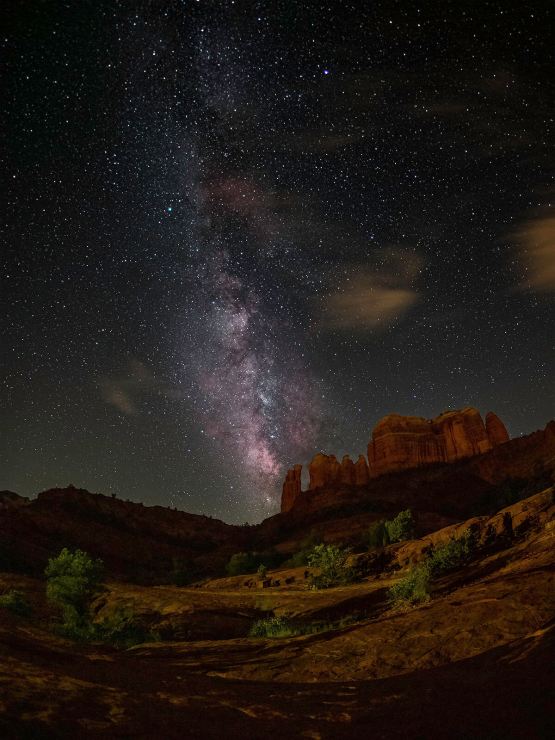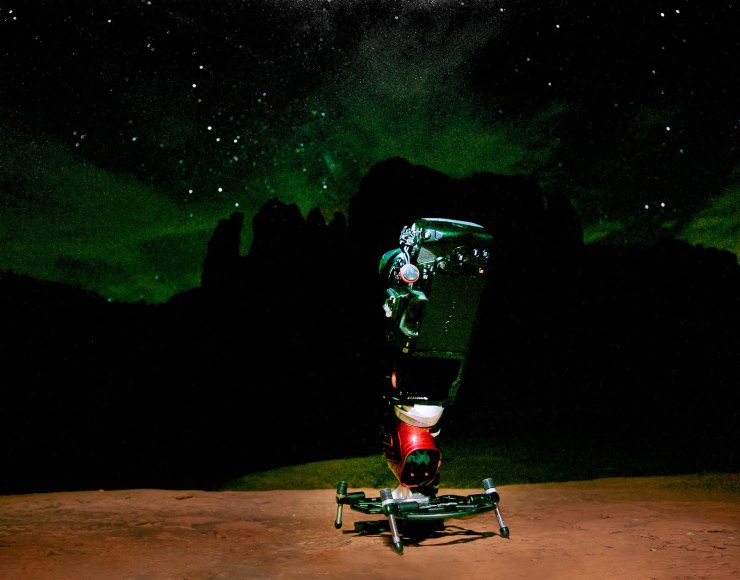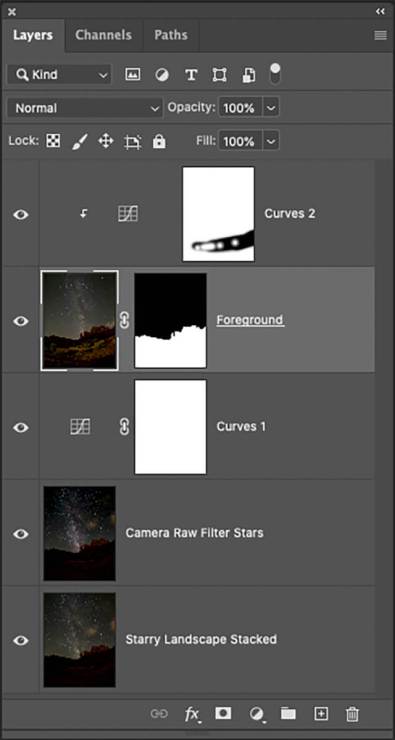I liken the capture of a solid Milky Way image with the Galactic Core to be akin to playing a 4D board game. You need to know where the Galactic Center will be but that is just the beginning.
Other factors include where, when and how bright the moon. Is there light falling on the foreground? Is there an interesting foreground subject? And, don’t talk to me about the weather!
It’s been a while
It seemed as if the stars had been put away for the season. Hadn’t seen the Milky Way for a couple months. Monsoon season full of clouds and rain appeared throughout the summer. Rain was welcome, but I was in need of some astro action.
Finally, the opportunity came and I jumped on it even though there were some less than ideal conditions for the location I had in mind.

The location
Back O’ Beyond road leads to Cathedral Rock Trail in Sedona, AZ. Using the PhotoPills app, I knew the Galactic Center of the Milky Way would be dropping down on the corner of Cathedral Rock formation. I also knew that a new moon allows the stars to shine the foreground would render in almost total silhouette. A foreground is less than ideal when all is black. I planned to add a little light on a foreground tree to add interest. That wasn’t working out too well.
The kit

A handy feature with the Olympus is Starry Sky Autofocus (AF), which takes the guesswork out of having sharp stars. My camera was mounted on the Platypod eXtreme base with a Platyball head. This made it easy to get close to the ground and still being able to easily level and lock the camera into position. This setup worked well with my 8mm fisheye lens. I didn’t need to make any adjustments to the framing in post; the curvature worked well for this composition.
Exposure and processing

My exposure was 10 seconds, ISO 6400 and f/1.8. The stars were processed in Starry Landscape Stacker (SLS) to gather more light without getting star trails. The ‘Rule of 500’ suggests that you could leave the lens open for 30 seconds, but that definitely shows some star trails. SLS blends multiple frames and stacks the stars taking into account the Earth’s movement.
Dark frames are also made with the lens cap on to help tame noise. 22 star frames and five dark frames were processed. The main rock formation at the top was lit by some light pollution from the town.
The star image was then taken into Photoshop and enhanced then blended with the foreground scene lit by the wayward car.
As a quick note, Starry Landscape Stacker is only available Macs. If you have a PC, there is a similar program that is called Sequator.
All in all, a great night coming away with some solid imagery!
Yours in Creative Photography, Bob
Tell your story with the second annual Visual Storytelling Conference!
Experience four days of interactive, online training sessions featuring a range of educational content with experienced photographers and content creators. This free event kicks off with a series of technical boot camps to build essential skills, followed by live, online sessions on photography, video, business and social media. Join live from March 10-13, 2022!
